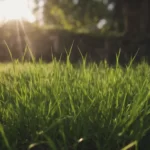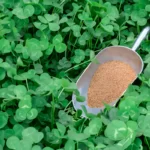Earthworms are often hailed as the unsung heroes of healthy soil and robust garden ecosystems. While their underground activities are well-known for aerating and enriching the soil, there is a common inquiry regarding their diet: Do earthworms eat leaves? This article aims to delve into the feeding habits of earthworms, specifically focusing on their interaction with leaf matter and the ecological significance of this behavior.
Earthworms
Belonging to the class Oligochaeta within the phylum Annelida, earthworms are characterized by their segmented bodies and burrowing lifestyle. These invertebrates play a crucial role in soil health and ecosystem functioning, primarily through their actions of decomposing organic material and enhancing soil fertility. Earthworms are found in a variety of habitats, from deep agricultural soils to rich forest floors, where they thrive in moist, organic-rich environments.
The Diet of Earthworms
The diet of earthworms is predominantly composed of organic matter. They feed on a range of decomposing plant material, including leaves, dead roots, and other organic detritus. The process of consuming and digesting this material is known as vermicomposting, which transforms organic waste into nutrient-rich worm castings, an excellent fertilizer for plants.
Earthworms consume their food by pulling it into their burrows and letting it decompose further. As they do not have teeth, the decomposition process is essential for making the organic matter soft enough for them to ingest. The digestive process of earthworms involves grinding the material in their gizzards and then absorbing nutrients in their intestines. The resulting castings are rich in essential nutrients like nitrogen, phosphorus, and potassium.
Earthworms and Leaf Consumption
Addressing the core question, earthworms do indeed consume leaves as a significant part of their diet. Leaves that fall to the ground and begin to decompose become prime food sources for earthworms. These creatures play a vital role in breaking down leaf litter, turning what could be a thick, smothering layer on the forest floor or garden bed into valuable compost.
When leaves fall and start to decompose, they are colonized by microorganisms such as bacteria and fungi. Earthworms are actually more attracted to these microorganisms than to the leaves themselves. As they consume the decomposing leaves, they also ingest the microorganisms, which are essential for the worms’ nutrition.
Factors Influencing Leaf Consumption by Earthworms
Several factors influence the consumption of leaves by earthworms. The type of leaf can affect its attractiveness to worms. For instance, leaves that decompose quickly, such as those from deciduous trees, are generally more appealing to earthworms than tougher, slower-decomposing leaves like pine needles.
The stage of decomposition also plays a role. Earthworms prefer leaves that have started to break down and are softer to consume. Additionally, environmental conditions such as moisture and temperature can impact earthworm activity. Earthworms are more active in moist conditions, which is why they are often seen on the soil surface after rain.
Seasonal variations also play a part in leaf consumption. In the autumn, when leaves are abundant, earthworms are very active in pulling leaves into their burrows. This activity decreases in the winter when temperatures drop and the ground may freeze, reducing earthworm activity.
The Ecological Impact of Earthworm Leaf Consumption
The leaf-eating habits of earthworms have profound ecological implications. By consuming and decomposing leaf litter, earthworms play a crucial role in nutrient cycling. The process of vermicomposting transforms leaf matter into a form that is more readily available for plant uptake. Worm castings enrich the soil with essential nutrients, improving soil structure, water retention, and fertility. This activity supports healthier plant growth and contributes to the overall productivity of ecosystems.
However, the impact of earthworms is not always beneficial in all ecosystems. In some forest ecosystems, particularly in North America where earthworms were introduced, their activity can disrupt the natural layer of leaf litter. This layer is vital for seed germination and provides habitat for a variety of microfauna. In these cases, earthworm activity can inadvertently lead to reduced biodiversity and altered forest dynamics.
Conclusion
In summary, earthworms do eat leaves, playing a vital role in decomposing and recycling organic matter back into the soil. This activity is essential for maintaining soil health and fertility, contributing significantly to ecological balance. However, the introduction of earthworms in certain ecosystems where they are non-native can have unintended consequences, highlighting the complexity of ecological interactions.
Understanding the behavior of earthworms and their role in the environment is crucial for gardeners, farmers, and conservationists. By appreciating these creatures and their contribution to nutrient cycling, we can adopt more sustainable practices in gardening and land management. Encouraging a balanced ecosystem where earthworms and other organisms thrive leads to healthier soils and more robust plant growth, ultimately benefiting the broader environment.



